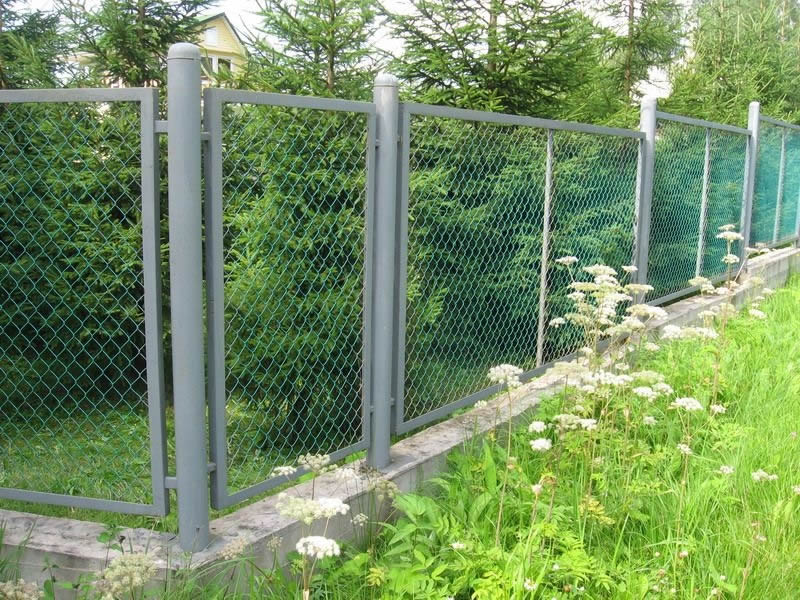Your relaxing and beautiful garden by day becomes dark and secluded by night, making it an ideal entry point for burglars and intruders. In fact, professional locksmiths who are knowledgeable about security say that items such as gardening tools often left in the garden are enough to attract burglars. These criminals are even more drawn to homes with garden sheds which some often leave unlocked.
One of the most effective ways to deter intruders from entering your garden is by fortifying it with high-quality fencing or upgrading your existing one. Amongst the different fencing materials, which one best suits your needs? How high should your garden fence be? Will spikes on the fence provide better protection?
The best people to answer these questions are the security experts, so in this guide, the professional team at Locksmith Bradford do just that. They also share additional insights on garden fence security, including tips on how to make your fencing more secure.
SPONSOR AD
A Burglar’s Perspective
Burglar-proofing your garden begins with analysing how it may appear to an intruder. Imagine yourself as a thief deciding their plan of action. Ask questions like, “Are the fences easy to climb over?”, “Where can I enter it without being detected?”, “Where can I hide should someone check the area?” or “What valuable items can I easily make off with?”.
Looking at your garden – its size and layout will help you identify vulnerable areas that burglars might exploit to get inside your space as well as places where they can hide or stash the items they plan to steal for easy pick-up before making their getaway.
Choosing the Fencing Material That Best Suits Your Needs
Wood
Because of its aesthetic appeal, wood is a very popular fencing material. However, it is prone to decay. With all the rain in the UK and the low temperatures, it is important that you choose the kind that can withstand moisture and the cold. It may tend to be drier or wetter in your specific location, so the local climate should also be taken into account.
Your budget is another major factor to consider. If money isn’t an issue, go for the most expensive and secure wood available for fencing. However, if you are working within a limited budget, you’ll need to look into the pros and cons of each type of wood to determine if it’s worth the investment.
Cedar
Cedar is considered the top-of-the-line wood for fencing. It is rot- and insect-resistant, durable, and visually appealing. In fact, a properly maintained cedar fence can last up to 30 years. Its moisture content adapts to its surroundings allowing it to handle varying weather conditions. This means that fences made with cedar are less likely to crack or warp. Overall it provides a high level of security for your garden and will do so for decades to come.
Cypress
Cypress wood is another excellent choice for fences. It’s rot-resistant making it long-lasting just like cedar. Its yellowish brown colour and unusual grain patterns give it a nice rustic appeal. It is durable and weather resistant but because it is harder to source, it generally has a higher price tag in the UK.
Redwood
Amongst the three – cedar, cypress, and redwood – the last is the most expensive in the UK. It is stronger than the two other wood types and is resistant to insects and decay. In addition, its slow growth and limited availability contribute to its premium price. However, Redwood is generally considered worth every penny.
Metal
Whilst not as aesthetically appealing as wood, metal offers superior durability and security. It also requires less maintenance compared to wood which must be regularly stained and sealed. A metal fence doesn’t have to be drab or uninteresting as there are several styles and finishes to choose from.
Galvanised Steel
In addition to affordability, chain link fences are strong, durable, and very secure , which is why they are widely popular. They are made of galvanised steel wire coated with zinc, making them rust and corrosion-resistant. These fences are very difficult to cut through and can withstand heavy wear and tear.
Versatility is another great quality of galvanised steel. There are fences with ornamental features made with this material. However, the more aesthetically pleasing versions tend to cost more than the chain-link option.
Vinyl
Vinyl fences provide excellent security as they are hard to climb or kick in. Unlike wood, they don’t rot or warp, nor do they rust and corrode like metal ones. These types of fences typically last between 20 – 30 years; in fact, they are so durable that some even come with lifetime warranties. In addition, vinyl fences are practically maintenance-free, only requiring cleaning once or twice a year. Burglars will struggle to get into a garden enclosed by these tall and solid fences.
Composite Material
Composite fences combine the aesthetic appeal of wood and the durability of plastic. It is rot- and insect-resistant, can withstand harsh weather conditions, long-lasting, and some even offer noise reduction. They are low maintenance and come in a variety of colours and designs. Additionally, many of these fences are made from recycled wood fibres and plastic, making them a sustainable fencing option. Compared to wood and vinyl fences, composite ones are more expensive but cost-effective in the long run.
Bamboo
Sustainability and visual appeal are the two major benefits that bamboo fences offer. They are also budget-friendly, generally being less expensive than other fencing options and with installation costs. Bamboo is naturally pest resistant but when treated, it offers better protection from other insects and pests. A bamboo fence’s durability highly depends on the climate and maintenance. The rain and moist weather in the UK are not bamboo-friendly but applying a protective sealant can extend a bamboo fence’s lifetime.
Making Garden Fences Secure
A well-chosen garden fence can effectively protect your garden from intruders but you can reinforce it further by adding other elements sudh as using anti-climb paint, installing security spikes, and even plants that deter trespassers and thieves. For rear garden fences with doors, high security locks can be installed by skilled locksmiths to ensure that unauthorised entry is prevented and your property remains secure.
Anti-Climb Paint
Anti-climb paint is a petroleum-based substance that stays permanently wet and slippery. A fence coated with this paint is therefore extremely hard to grip and nearly impossible to scale. Because it can easily stain skin and clothing, it should be applied only to the higher sections of a fence, areas that are typically accessible only to intruders.
It is important that people passing by the fence don’t accidentally come in contact with the paint to avoid complaints and disputes if their skin or clothing become stained by the substance. Put up clearly visible warning signs that can be easily understood, especially for children who may be tempted to climb your fence.
Plants and Bushes
A leaflet from The Metropolitan Police lists 17 shrub varieties that can be planted around the house as a natural defence against intruders. Some of the recommended plants include:
- Firethorn: This bush produces orange-red berries and white small white flowers during the summer. The thorns on its stems will help keep burglars at bay.
- Creeping Juniper: The sharp and prickly foliage on this shrub can be unpleasant to brush against and walk upon.
- Giant Rhubarb: This plant grows enormous toxic leaves with prickly undersides, making them an effective barrier against unwanted visitors. Additionally, its sap can irritate the skin resulting in rashes.
- Blue Spruce: Commonly used as Christmas trees, these trees have dense foliage made up of spiky needles creating a good natural barrier against harsh winds, animals, and intruders.
- Common Holly: The pointed sections along the margin of its thick leaves are sharp enough to attach to clothing and even tear skin. A dense shrub of common holly planted in vulnerable areas of your garden will help create a protective barrier.
Making Your Rear Garden Fencing More Secure
Before doing any work, make sure to secure a permit from the local planning department , if required.
- The fence in your rear garden should be 1.8 metres high.
- Install it very close to the ground that it would be impossible to crawl under it to gain access to the garden. If you’re working on an uneven surface, use shorter fencing panels.
- To prevent intruders from using the fence’s horizontal bracing to climb out of your garden, keep it on the inside and chamfered at a 45 degree angle.
- Use brackets to securely attach fence panels to posts, making them impossible to lift.
- Keep your fence or wall well-maintained at all times. Rickety and dilapidated fences expose both your home and garden to outsiders and make the property especially attractive to burglars, sending a message that your home may not be secure either.
Front Garden Fencing Advice
A low fence at the front of your home clearly defines the boundary of your property. By installing one, trespassers can easily be identified and no one can claim that they have your property by mistake. However, before constructing a wall or installing a front fence, make sure to first check with your local planning department.
Avoid buildinga wall or fence that is higher than 1 metre next to a road or a pavement to provide visibility for drivers and pedestrians. This height also enhances home security by allowing natural surveillance of your property by neighbours and passers-by.
A low front fence however, also makes it easier for trespassers and criminals to come to your front door. This vulnerability makes it essential to have additional security measures in place which locksmiths can expertly install and set up.
The Legal Essentials of Garden Fencin
Garden fences without planning permission can be as high as 2 metres although the rule may not apply for gardens located along a highway. Keep in mind that there are regulations to follow with regard to garden fences and adhering to them will keep you from getting into trouble.
Fence ownership is one issue that can lead to disputes between neighbours. This and similar problems can often be resolved by checking the property deeds, specifically for information about responsibility for maintaining the boundary.
Final Thoughts
A beautiful garden is a feature that brings much pleasure and relaxation to many homeowners. However, this special place can also be used as entry points by trespassers and burglars, making it essential to install secure fencing. A variety of fencing materials offer strength, durability, longevity, visual appeal and a high degree of security including wood, metal, composite material, and bamboo. Furthermore, fences can be reinforced with additional components such as anti-climb paint, spikes, and certain plants can serve as natural barriers against unwanted visitors.
With the help of professional locksmiths, your garden will be better protected from burglars and other criminals. They can install and implement security solutions as well as provide ongoing maintenance, ensuring the protection and safety of not just your outdoor spaces but the inside of your home as well.








